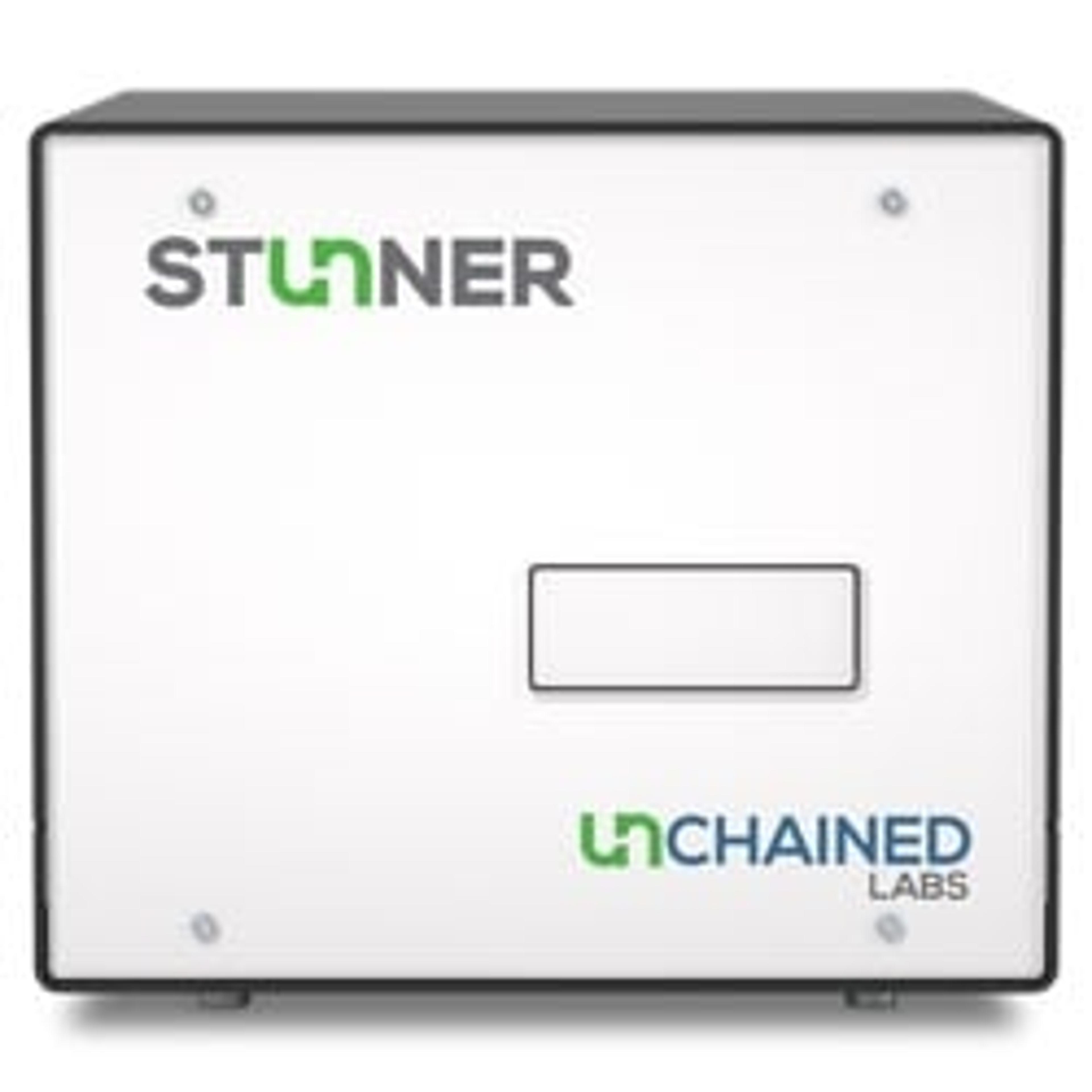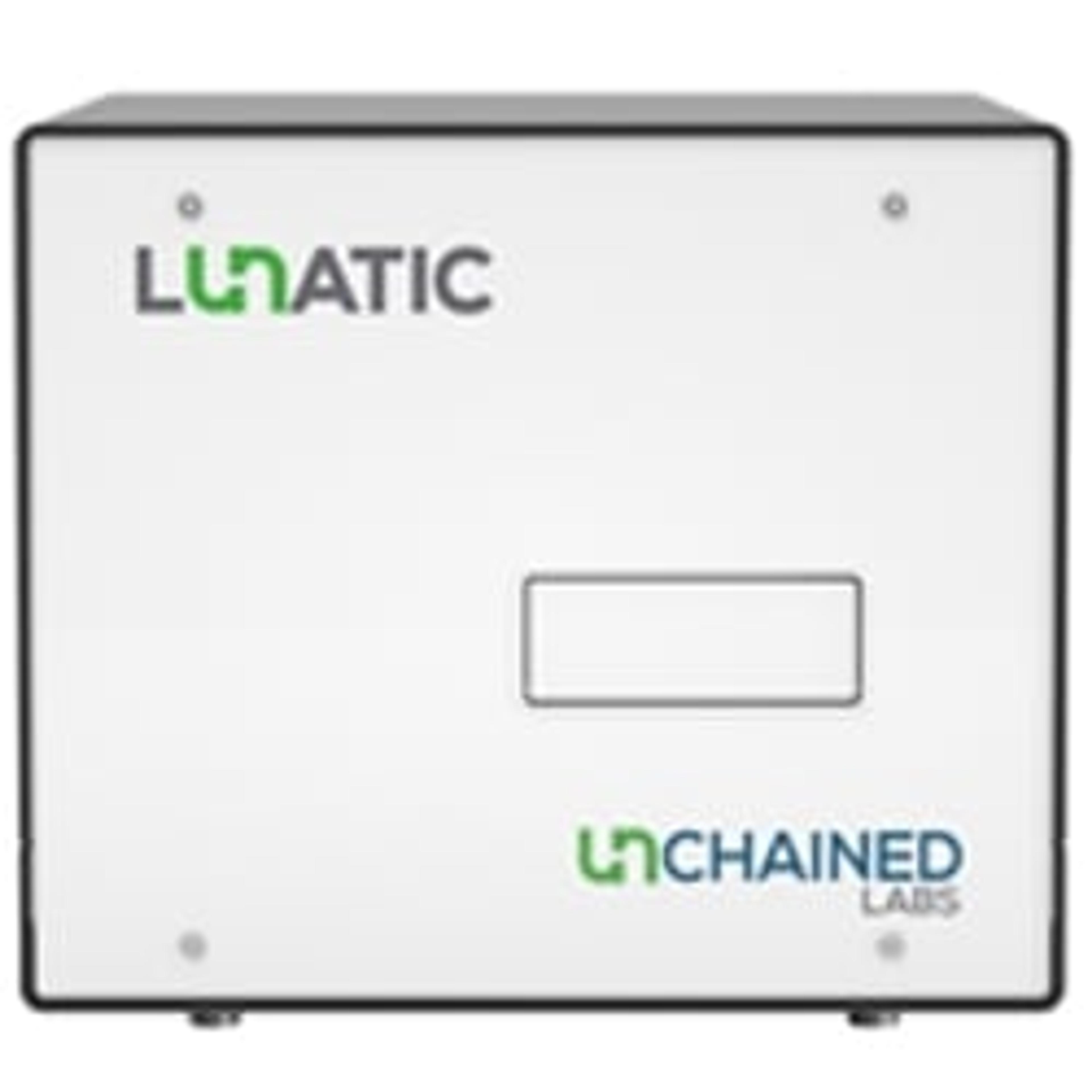Get the Rundown on Your Protein with Same-Time Quality & Concentration Measurements
Watch this on-demand expert webinar exploring how solutions from Unchained Labs are designed to streamline protein quantification and characterization
21 Jun 2019
In this SelectScience webinar, now available on demand, Lisa Adamiak from Unchained Labs discusses how the Lunatic and Stunner systems are designed to combat the need for large amounts of protein and multiple instruments when collecting proteomics data.
Find out how Lunatic makes batch-wise concentration measurements a breeze by using just 2 µL of the sample, and eliminating dilution steps and cross-contamination risks. Measure up to 96 samples in just five minutes, even at high concentrations. Want to take your protein quant up a notch? Stunner merges all the cool things Lunatic can do with DLS on a single platform. Along with concentration, Stunner enables you to measure the expected size and polydispersity, and aggregation propensity, of your proteins in one shot. Experts also discuss how you can create your own applications on Stunner to customize the data output the way you want.
WATCH ON DEMANDWatch this webinar if you would like to:
- Learn how to perform advanced UV/Vis analysis to quantify proteins
- See how simultaneous DLS measurements add value to protein quantification
- Learn how to measure the aggregation propensity of your proteins with light scattering
Think you could benefit from this webinar, but missed it? You can now watch it on demand at a time that suits you and find some highlights from the live Q&A session below>>
Q: You mentioned that there are two cuvettes, are both of these used to make the measurements?
LA: Yes, both cuvette sets are used to make measurements in Lunatic and in Stunner. In Stunner, for example, the first cuvette is a 0.1-millimeter pathlength cuvette, and the second is a 0.7-millimeter pathlength cuvette. Now, for Stunner, the UV-VIS is measured in both, while the DLS is measured in the second pathlength cuvette. So keep in mind that DLS measures from 0.3 to 1,000 nanometers in particle diameter, and UV-VIS measures the full absorbance spectrum from 0.03 to 275 OD.
Q: Can I select what absorbance range I measure?
LA: Absolutely. Homebrew in Stunner is actually perfect for this. The default range is actually shown on screen from 230 to 450 nanometers, while the whole range is collected from 230 to 750 nanometers. However, you can select any kind of wavelength range that you want to measure.
Q: If my samples are being measured in different buffers, can I run them all at the same time?
LA: Stunner allows you to measure samples with all different kinds of buffers using sample grouping. This is a really nice feature, especially for kD and B22 colloidal stability measurements. So, if you have a lot of different proteins or a single protein in different types of formulations, it is a good way to group these in terms of their protein titration measurements in their respective formulation. This is great because you can essentially select different samples all in a single plate, so, up to 96 different samples at a time.
Q: If I've already measured my samples, can I analyze them in different ways?
LA: Yes. In both Lunatic and Stunner, the data can be recalculated using different applications, provided that it's along the same sample type. For example, if I ran my protein sample using the A280 protein application and I want to now try a single wavelength background correction method, I can easily recalculate the data. Also, in Stunner, because the Homebrew application allows you to make your own custom apps, you can then recalculate data that you've already collected if you want to change the viscosity or refractive index parameters for DLS, or if you want to do something a little bit different to analyze the UV-VIS analysis as well.
Q: Have you ever tried to follow aggregation with DLS?
LA: Stunner is really good to follow aggregation because it is so sensitive. However, it is well known that the resolution is pretty low. So, in order to be able to resolve size differences, the particle diameters have to be three times the maximum of each other — a threefold difference in size. The PDI, or polydispersity index, is also a good measure of the heterogeneity of the sample and is a really great way to follow aggregation. A PDI of less than 0.1 on Stunner indicates a really nice, clean monodisperse sample. Anything above 0.1 will indicate that you have multiple populations in solution.
SelectScience runs 3-4 webinars a month across various scientific topics, discover more of our upcoming webinars>>


